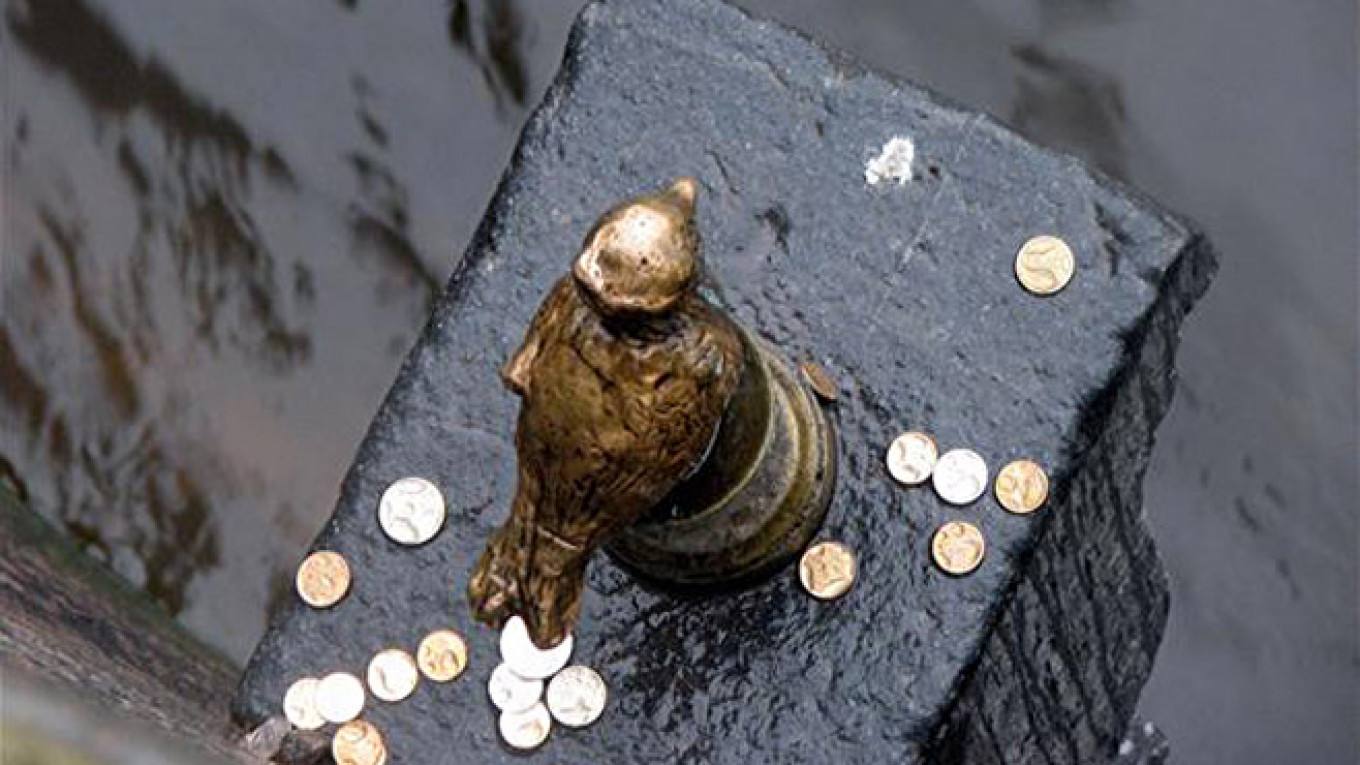ST. PETERSBURG — Along St. Petersburg's steep embankment walls that encase the Fontanka River and a stone's throw away from the Engineer's Castle is a statue of a small little bird known to locals as Chizhik-Pyzhik. The statue is of a siskin, better known as a goldfinch or barley bird in some parts of the world, and it maintains a tiny yet significant presence on its perch along the river.
While the statue itself is no more than 20 years old — it was first installed in its current position in 1994 after being sculpted by Georgian artist Rezo Gabriadze — the inspiration for it dates back more than 150 years earlier, to the days of St. Petersburg's Imperial Law School.
The Imperial Law School first opened its doors at the end of 1835 thanks to the efforts of Duke Peter Georgievich of Oldenburg. The nobleman realized the year before that there was a desperate need for legal reform in imperial Russia, and he approached Tsar Nicholas I with a proposal to open an institution to train the future lawyers of the empire.
Unlike modern law schools, the requirements for entry were far different and favored Russia's highest class. No more than 100 people were accepted in the first class, all chosen from the families of Russian nobility, and applicants could be no younger than 12 and no older than 17. Those who finished with honors were appointed to positions in the Justice Ministry and the Senate, while those with less-than-stellar grades found themselves sent to provincial courts.
The school remained open more than 80 years until the Bolsheviks seized power in late 1917. In 1918, the Commissariat of Public Education closed the Imperial Law School and gave the building to the Agronomy Institute.
During its tenure as one of the city's finer educational establishments, the students wore green and yellow uniforms, the same color as the feathers of a siskin, or "chizh" in Russian. The students' frequent drinking even led to a folk song that would forever associate the law school with the bird, complete with the lyrics: "Chizhik-Pyzhik, where have you been? On Fontanka, drinking vodka."
The current statue is in honor of the hard-working and apparently harder-drinking students of the school. Passers-by throw coins at the bird's perch, trying to land them on the slim ledge offered because it is widely believed to be good luck if the coin stays atop it and doesn't fall into the river. As Gabriadze said after completing the statue, "Chizhik-Pyzhik helps students get through unhappy love affairs and get around on public transport without having tickets."
Despite its presumed ability to provide good luck, the statue itself has suffered from a remarkable lack of it. Only 11 centimeters tall, the statue has been stolen several different times since its placement, the last time as recently as 2002. The Urban Sculpture Museum has addressed the problem by reportedly having several copies of the statue in stock copied from Gabriadze's original design.
Contact the author at artsreporter@imedia.ru
A Message from The Moscow Times:
Dear readers,
We are facing unprecedented challenges. Russia's Prosecutor General's Office has designated The Moscow Times as an "undesirable" organization, criminalizing our work and putting our staff at risk of prosecution. This follows our earlier unjust labeling as a "foreign agent."
These actions are direct attempts to silence independent journalism in Russia. The authorities claim our work "discredits the decisions of the Russian leadership." We see things differently: we strive to provide accurate, unbiased reporting on Russia.
We, the journalists of The Moscow Times, refuse to be silenced. But to continue our work, we need your help.
Your support, no matter how small, makes a world of difference. If you can, please support us monthly starting from just $2. It's quick to set up, and every contribution makes a significant impact.
By supporting The Moscow Times, you're defending open, independent journalism in the face of repression. Thank you for standing with us.
Remind me later.


